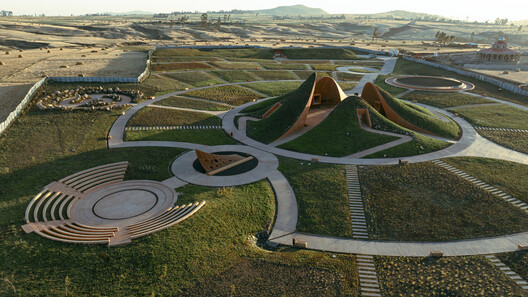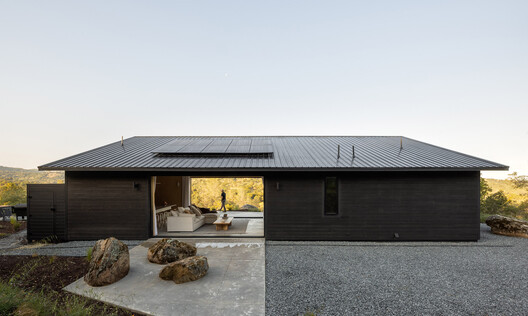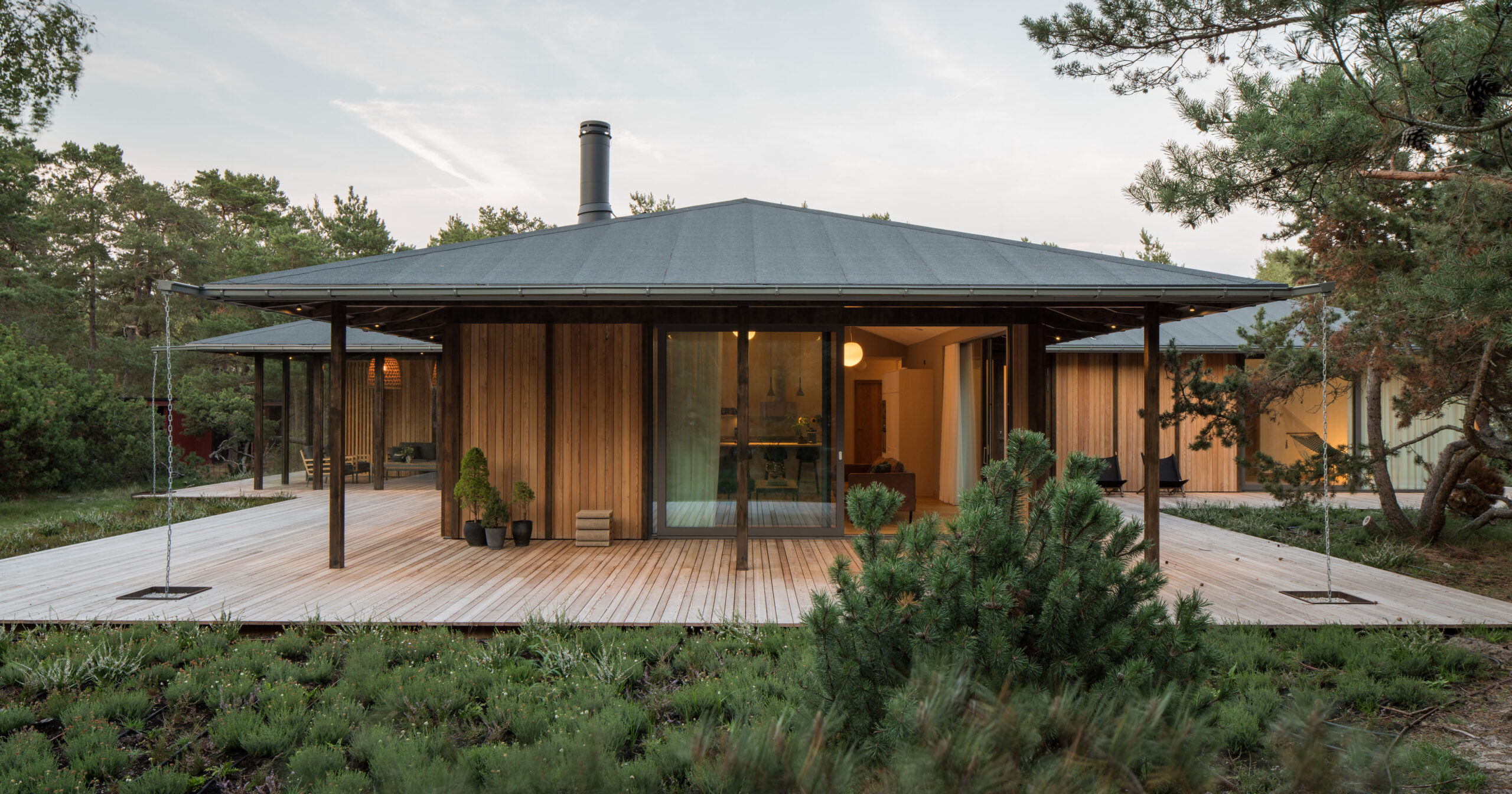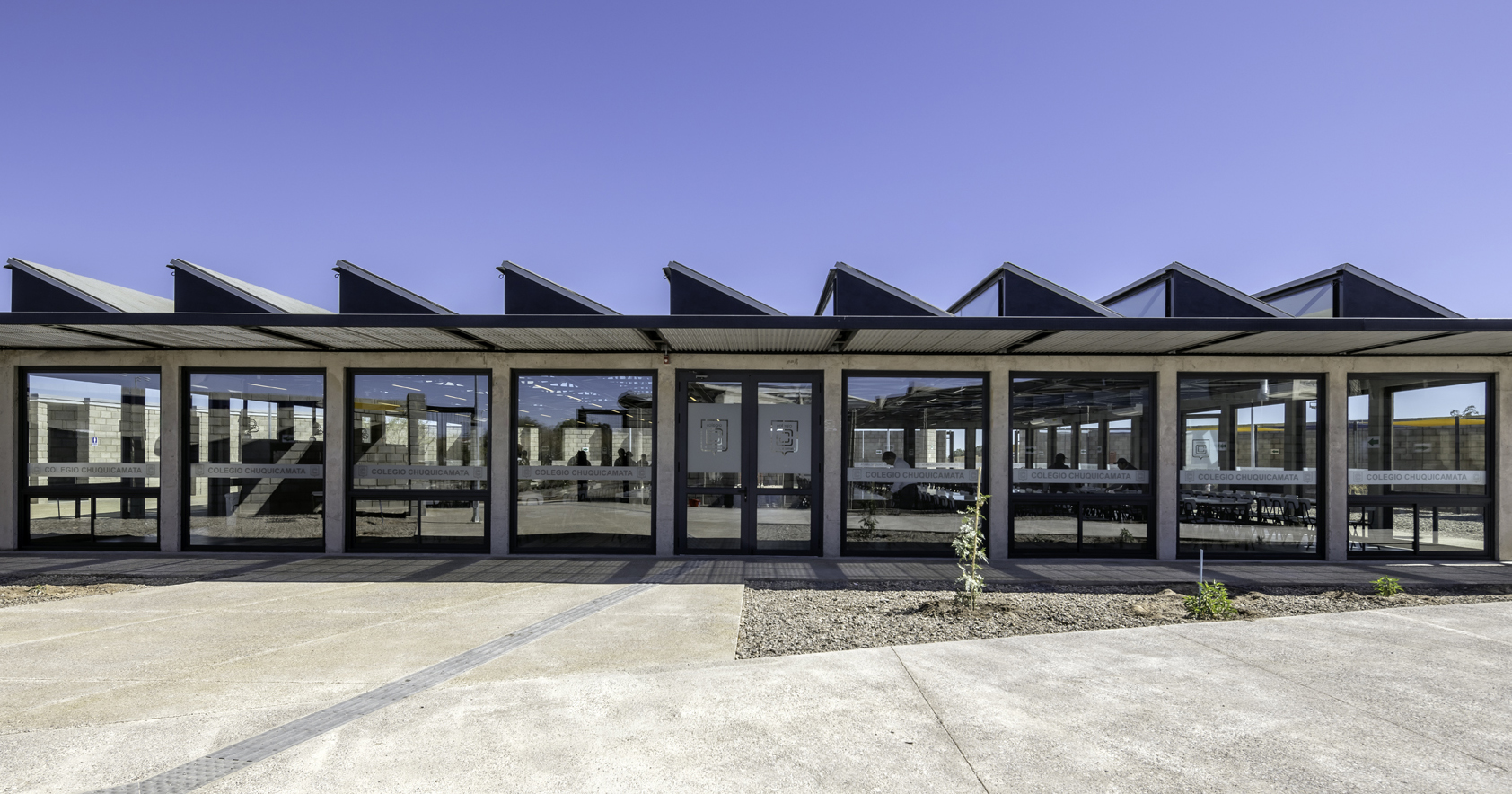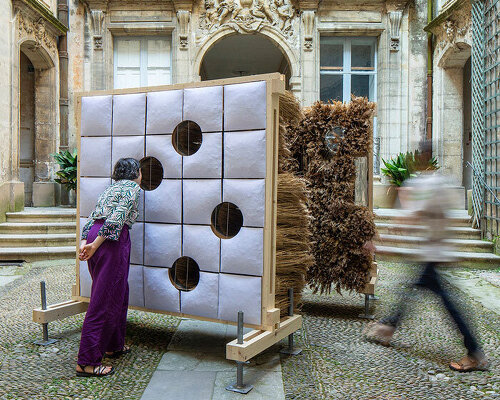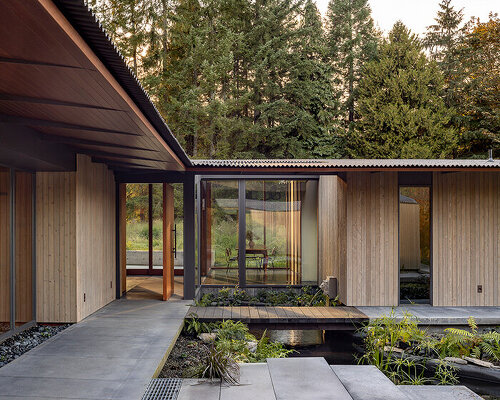Junya Ishigami places cloud-like kiosk "on the verge of falling over" in Fukuyama


Junya Ishigami is one of three Japanese architects to have designed sculptural, mobile kiosks for the Hiroshima Architecture Exhibition 2025, currently taking place in Fukuyama, Japan.
Architects Yasushi Horibe and Hideyuki Nakayama have also each created a kiosk for the architecture and art event, which is being held in Hiroshima Prefecture until 30 November.

Ishigami's contribution, named Clouds Descend, is positioned in front of the south exit of Fukuyama Station.
The sculpture, which functions as a visitor information centre for Hiroshima Architecture Exhibition 2025, was designed to emulate a cloud skimming the ground. It is complete with tables and stools that match this cloud-like form.

Clouds Descend was constructed from bent steel, chosen by Ishigami after a visit to the factory of shipbuilder Tsuneishi Shipbuilding. The company is the sponsor of the kiosk, alongside Japanese waste company Tsuneishi Kamtecs.
The architect said he was "overwhelmed by the sheer power" of the shipbuilder's manufacturing process, which involves bending large steel plates to form ships.

"This small kiosk is also constructed by bending steel plates into three-dimensional shapes and welding them together̶similar to building a ship," said Ishigami.
"It is installed like a ship leaning to one side, balanced by the principle of a self-righting toy, achieved by making the base heavy," he continued.
"The sight of it installed on the ground, teetering precariously on the verge of falling over, is evocative of clouds gently touching the land."

Horibe’s kiosk, named Tsuboya, is a compact wooden hut set in the Garden of Ignorance at the Shinshoji Zen Museum – one of the venues for the Hiroshima Architecture Exhibition 2025.
Its scale was based on the traditional Japanese measuring system called Tsubo and was crafted with the sponsor and woodworker Wood One Co from solid Yoshino cypress timber and traditional Japanese carpentry techniques.
"I believe architecture is not merely physical, it is a 'way'," said Horibe. "It is a single path stretching from the past to the future, and this project exists along that path," he continued.
"I see it as an important opportunity to consider what can be done to preserve the kinds of materials we are familiar with today, and the traditional hand-carving carpentry techniques that are disappearing before our eyes."

The third kiosk, designed by Nakayama, is located nearby in the city of Onomichi. It sits on the waterfront beside the mixed-use Onomichi U2 venue.
Named Kiosk Through Which the Landscape Passes, the structure comprises two small seats sheltered by an arched, transparent canopy. The units are set on wheels, allowing them to be separated or combined to form a single shelter.

"When the kiosks are joined, the space born in the middle is where the visiting people and children meet," said Nakayama.
"I imagine a scene unfolding like a large, transparent sketchbook, with different pictures drawn each day against the changing backdrop of Onomichi's sea and sky."

Kiosk Through Which the Landscape Passes was sponsored by automotive parts company Molten Corporation.
While Ishigami's kiosk functions as a visitor centre, the two by Nakayama and Horibe are intended to "serve as a 'gateway to ideas' and a 'forum for dialogue'" at the event, according to organisers.

Hiroshima Architecture Exhibition 2025 showcases the work of 23 architecture and art groups across eight exhibitions. Dezeen is a media partner for the event.
The trio of kiosks will also be on show at Hiroshima Architecture Exhibition 2028 and 2031, alongside kiosks created for these later editions of the event.
Other kiosk architecture featured on Dezeen includes a series of prefabricated pavilions by Heams & Michel Architectes that are finished with geometric lattices in Cannes and the minimalist Kube structure in Hong Kong by OMA.
The photography is by Yoshikuni Shirai unless stated otherwise.
Hiroshima Architecture Exhibition 2025 takes place from 4 October to 30 November 2025 in Fukuyama, Japan. See Dezeen Events Guide for an up-to-date list of architecture and design events taking place around the world.
The post Junya Ishigami places cloud-like kiosk "on the verge of falling over" in Fukuyama appeared first on Dezeen.







.jpg)



